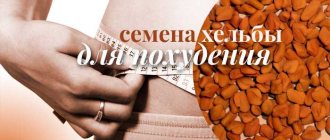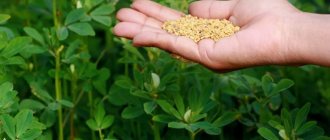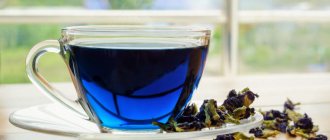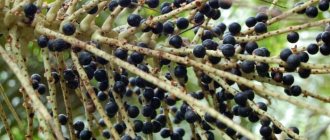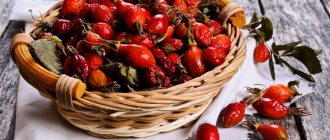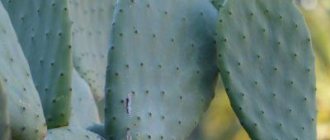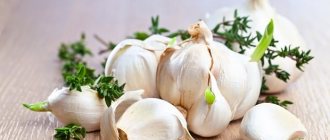Pectin is a very popular food additive in the modern world. It is most often used in food production as a thickener. For example, pectin is added to jams and preserves, as well as confectionery products. In recent years, pectin has also gained fame as a superfood with a long list of beneficial properties.
Pectin is found naturally in almost all fruits and berries and in some vegetables. When heated with the addition of sugar, pectin makes the consistency more viscous: you could observe this effect if you have ever made jams yourself.
Pectin is a gelling agent known in the food industry under the symbol E440. Most often it can be found in sweets made from milk or fruit: various types of jellies and soufflés, creams for cakes and pastries, jams and confitures - the substance is responsible for maintaining the required consistency.
What is pectin and what functions does it perform?
Pectin is a substance that acts as a consistency regulator, namely a thickener. It is obtained from natural ingredients: fruits (apples, oranges), berries (black currants) and some vegetables (beets and carrots). One of the most popular types for use at home is apple pectin. Accordingly, pectin is a completely safe additive of natural origin that cannot harm human health. It was discovered two centuries ago in France, isolating it from citrus juice. Since then, pectin has gained high popularity not only in food production, but also in the production of medicines. Scientists and nutritionists attribute beneficial properties to pectin, calling it the body’s “nurse” - the fact is that the supplement is able to remove harmful substances without causing disruption to the intestinal microflora. That is why products rich in pectin are recommended for consumption by people working in heavy production. In addition, pectin has beneficial properties in terms of metabolism: it speeds it up, lowers the level of bad cholesterol and normalizes the functioning of the gastrointestinal tract.
In ripe fruits, pectin is necessary to maintain shape. Unripe fruits contain propectin, a polysaccharide precursor of pectin, formed by galacturonic acid residues. During the ripening process, it helps to maintain the fruit's shape and firmness. Pectins are divided into soluble and insoluble
. Soluble pectins are found in the juice, and insoluble pectins are found in the coating. During the ripening process, insoluble pectins turn into soluble pectins. The largest amount of pectin is found in apples, pears, plums, oranges, lemons and grapefruits. Currants, gooseberries and strawberries are also rich in it. Among root vegetables rich in pectin, it is worth highlighting beets and carrots, and among vegetables - bell peppers, tomatoes and eggplants.
Pectin as an ingredient in dishes and a food additive is a white, sometimes yellowish or grayish, powder with small granules.
Pectin belongs to the group of polysaccharides responsible for maintaining the required physical properties. It is polysaccharides that provide the required consistency of many foods.
Features of pectin
Pectin is produced by extracting pulp from fruits or vegetables (carrots, apples, lemons, bell peppers, oranges, cherries, plums, tangerines, eggplants, pumpkins, beets, persimmons). The thickener is available in the form of a liquid extract or powder. It has no aroma, taste, and is light sandy in color.
Use: in the production of desserts, dairy products, desserts, cooking. The liquid substance is added to hot foods, powdered pectin is mixed fresh in the preparation of drinks and jelly.
Due to its beneficial properties, the polysaccharide is also used in the medical field in the manufacture of special capsules for medications. Pectin is added as a glue when making cigarettes. The substance is also of considerable use in cosmetology; a variety of cosmetic products for caring for the skin of the body and face are produced based on the substance.
History of the discovery of pectin
Pectin was first isolated as an independent substance by a French resident, scientist, naturalist and chemist Louis Nicolas Vauquelin at the end of the 18th century. But the study of the substance was already carried out by another Frenchman - Henri Braconneau. It was he who in 1825 gave the compound its current name.
In the same 19th century, manufacturers of sweets and preserves began to actively use pectin; marshmallows and marmalade made from apple pomace appeared in store windows.
The first liquid variety of pectin was obtained from an apple at the beginning of the 20th century in Germany. Then they learned to produce a similar additive in the United States - the technology for the production of liquid pectin belongs to the authorship of American specialists. After 10 years, the substance gained fame throughout Europe; a little later, residents of Mexico and Brazil began to use pectin - there the substance is extracted not from apples, but from citrus fruits.
Types of pectin and their distinctive features
Pectin can be different - the choice of a specific type of food additive depends on the purpose for which it will be used. In the confectionery industry, yellow and reversible pectin NH are the most popular. Pectin FX58 is used somewhat less frequently.
Yellow (apple, citrus pectin)
, as you might guess from the name, is made from oranges and lemons, sometimes apples are used to obtain it. There is no significant difference between the finished substances, the only difference is that citrus pectin, as a rule, allows you to prepare a more transparent jelly. This type of pectin is used to make jams. It is worth noting that it is impossible to reheat the food additive and the products in which it is included - the mass will not harden a second time. Yellow pectin loses its properties during long-term storage, so it must be stored in a tightly closed container.
Pectin NH
is a thermoreversible compound. The substance dissolves when exposed to elevated temperatures, and when cooled it becomes denser again. Products with the addition of this type of pectin can be heat treated without fear. Most often, the food additive is used to prepare fillings for cakes and pastries that are planned to be frozen, as well as to make mirror glaze.
Pectin FX58
differs from the two previous varieties in that it reacts not with sugar, but with calcium. The food additive has become most popular in molecular gastronomy.
It is also worth highlighting nappage pectin - it is a thermoreversible food additive. It is most often used to make neutral gels and glazes for confectionery products. To activate this compound, citric acid is required. Many people confuse NH pectin and nappage pectin. These substances really go together. The difference is that the first compound gives a more transparent consistency.
Acid-free pectin
– this substance is similar in its properties to ordinary pectin; for its proper operation it is necessary to maintain a certain level of acidity of the environment. The composition of acid-free pectin includes calcium salt of sulfuric acid - a hygroscopic stabilizer. This type of food additive is used when working with ripe fruits, which do not contain acid. Marmalade and powder paste are prepared based on acid-free pectin.
Slow setting pectin
is a substance that has the same properties as regular pectin. The additive differs in that it needs less time to harden.
In general, all pectin
can be divided into
3 main groups
:
- Low esterified pectin
with a degree of esterification below 50%. It is capable of giving the product a jelly-like consistency, regardless of the degree of its acidity, but the presence of calcium ions in the composition is important to it. Substances in this group are often used to change the consistency of dairy products. - Highly esterified
pectin with a degree of esterification of more than 50%. It is capable of giving the product a jelly-like consistency even with a high acidity level, provided that the sugar content in the mixture is high. Pectins of this group dissolve faster in water and gel mixtures faster. - Amidated pectin
is low-esterified pectin that has been treated with hydrogen nitrite. This pectin is used to make fillings for confectionery products, in particular for creams in fruit cakes.
| Composition and nutritional value of different types of pectin (per 100 g) | |
| Citrus pectin | |
| Squirrels | 3.5 g |
| Fats | 0 g |
| Carbohydrates | 9.3 g |
| Calorie content | 52 kcal |
| Apple pectin | |
| Squirrels | 3 g |
| Fats | 0.5 g |
| Carbohydrates | 30 g |
| Calorie content | 145 kcal |
| Pectin NH | |
| Squirrels | 3.5 g |
| Fats | 0 g |
| Carbohydrates | 9.3 g |
| Calorie content | 52 kcal |
| Additionally | Dietary fiber – 7.5 g, Ca, Mg, Na, Fe |
| Acid-free pectin | |
| Squirrels | 3.5 g |
| Fats | 0 g |
| Carbohydrates | 9.3 g |
| Calorie content | 52 kcal |
Pectin contains polygalacturonic acid and its methoxylated residues, methoxyl, carboxyl and acetyl groups, neutral polysaccharides - galactans and arabinans, as well as a long list of minerals: Ca, Mg, Na, Fe.
Types of pectin
The choice of pectin depends on the purpose, and one type cannot be replaced by another.
- Yellow. This labeling means apple or citrus pectin. Used in recipes for confitures and jams.
- N.H. Used to thicken sauce, mousse, jelly, to prepare fruit and berry layers and mirror glaze.
- Nappage. Necessary when working with very acidic products. Has good transparency. Used to prepare neutral gel and glaze. Activation requires citric acid.
- NH plus. Provides viscous texture. Used in preparing fillings and glazes.
- Used for gelling dairy products and preparing molecular gastronomy dishes.
- Acid free. Looks like a normal one. Contains calcium, so the level of acidity of the environment does not matter. Used in recipes for dishes made from fruits and berries that do not contain acid.
- Helps thicken calcium-rich foods.
- Slow set. Slowly gels. Suitable for gummies and fillings that need to be poured into molds.
What is apple pectin?
Apple pectin is made from apples or their waste and is considered basic. It is used in the preparation of many confectionery products that require gelling, mainly for fruit confiture and homemade marmalade. Working with it requires a lot of sugar, acid and exposure to high temperatures.
Pectin content in fruits, berries and vegetables
The largest amount of pectin is found not in apples and oranges, as one might think, since they are used to produce food additives, but in beets. Black currants take second place, closely followed by apples and other products: bananas, peaches, figs, pears, pineapples, carrots, etc.
| Product name | Amount of pectin in% per 100 g |
| Beet | 1,1 |
| Black currant | 1,1 |
| Red Ribes | 1,1 |
| Green apples | 1 |
| Radish | 1 |
| Plum | 0,9 |
| cucumbers | 0,9 |
| Pepper | 0,9 |
| Apricot | 0,7 |
| Strawberries | 0,7 |
| Cranberry | 0,7 |
| Gooseberry | 0,7 |
| Peach | 0,7 |
| Quince | 0,7 |
| Orange | 0,6 |
| Raspberries | 0,6 |
| Pear | 0,6 |
| Plums | 0,6 |
| Carrot | 0,6 |
| Watermelon | 0,5 |
| Eggplant | 0,4 |
| Red onion | 0,4 |
| Cherry | 0,4 |
| Pumpkin | 0,3 |
| Tomatoes | 0,3 |
| Green pea | 0,2 |
| Cherry plum | 0,1 |
Contraindications and application features
Pectin in supplements should not be overused.
The daily fiber intake is about 30 g per day, but you should always start with a small amount. (0.5-1 tsp)
- It is undesirable to take fiber for open stomach and intestinal ulcers, acute cholecystitis and pancreatitis.
- Pectin improves the absorption of vitamins and minerals, except iron!!!. The interval between taking fiber and iron supplements should be about 2 hours!
- When taking fiber, be sure to drink enough water throughout the day.
Pectin production
First, they are determined with pectin-containing raw materials. It can be played by: apples, beets, black currants and citrus fruits. Then extraction is carried out with water and acid, waste raw materials are removed and the resulting solution is purified.
Next, there are 2 main methods of working with the resulting extract:
- its concentration with precipitation with alcohol and centrifugation;
- precipitation of MeCl followed by pressing and grinding.
As a result, raw pectin is obtained, washed with alcohol, treated with alcohol alkali, crushed and pectin is obtained.
Pectin is dried in special vacuum dryers at a temperature of 55 to 65 degrees for 5-6 hours and a humidity level of no more than 14%.
The effect of pectin on the body
Research conducted by foreign experts has shown that pectin is not only incapable of harming the body, but also has beneficial properties. Before using for medicinal purposes, you should consult with your doctor: in case of individual intolerance, the food additive can provoke asthma attacks and cause flatulence.
Pectin is able to regulate cholesterol levels in the blood, bringing this indicator back to normal. Pectin can normalize the course of digestive processes, prevent the formation of malignant tumors, normalize the contraction process of the colon, have a positive effect on bacterial balance, help remove unwanted compounds from the body, lower sugar levels, improve blood circulation and destroy pathogenic bacteria.
A healthy adult’s body needs 15 grams of pectin per day. This amount is enough to normalize cholesterol levels and speed up metabolism. For weight loss, it is recommended to increase the amount of cholesterol you consume to 25 grams.
Useful properties of pectin
Scientists believe that if a person regularly receives 15-10 grams of pectin from food, this is guaranteed to reduce the risk of developing heart and cardiovascular diseases, cleanses the body of heavy metals and salts, lowers cholesterol and improves overall well-being. Experts also note the ability of pectin to slow down the movement of food through the intestines, which increases the amount of absorbed nutrients. This beneficial property of pectin is especially important for those who want to get rid of extra pounds.
Pectin and blood cholesterol levels
A high percentage of cholesterol in the blood is the main cause of cardiovascular diseases in people over 30 years of age. Yellow (citrus or apple) pectin can reduce the amount of bad cholesterol by 6-7%.
Pectin and the digestive process
Once in the esophagus, pectin is transformed into a gel-like substance that helps slow down the movement of food through the intestines. Thanks to this, the beneficial substances contained in the food consumed have time to be absorbed by the body, and a person feels full longer. This beneficial property of pectin is important for people on a low-calorie diet. It is also worth noting that pectin helps get rid of digestive disorders. The compound in question stabilizes oxidative processes in the stomach, has an enveloping and anti-inflammatory effect on damaged areas of the digestive system.
Pectin and oncology
According to studies conducted by Polish scientists in the middle of the last century, pectin promotes the death of malignant cells of the large intestine. The substance also removes carcinogens from the body.
Pectin and blood sugar levels
Pectin regulates blood sugar, so it is recommended to be consumed as a food supplement or as part of fruits and vegetables for people suffering from type 2 diabetes.
In addition, pectin is capable of:
- normalize metabolism;
- improve blood circulation;
- improve intestinal motility;
- lower the level of bad cholesterol;
- improve the patient's condition with ulcers and gastritis.
The beneficial properties of pectin have led to its widespread use in food and dietary nutrition.
When is it recommended to take fiber?
- For weight loss and obesity prevention.
- For the prevention of constipation, hemorrhoids, anal fissures, varicose veins of the lower extremities.
- For the prevention of malignant neoplasms of the large intestine, prostate, mammary gland and other tumors of organs and tissues.
- For the prevention of gastric and duodenal ulcers, neurotic dyspepsia, flatulence
- For the treatment of dysbiosis
- For the prevention of diseases of the cardiovascular system (atherosclerosis, myocardial infarction, stroke, hypertension)
- For the prevention and treatment of cholecystitis and cholelithiasis
- For the prevention of diabetes mellitus
- With a decrease in immunity of any etiology
Harm of pectin and contraindications to its use
Despite the long list of beneficial properties and natural origin, pectin is not a completely harmless food additive. Moreover, there are a number of restrictions on its use and there are even certain groups of people who are not recommended to introduce too many pectin-rich foods into their diet.
So, pectin can cause harm in the following two cases:
- if you have allergies;
- if you consume too much pectin in supplement form.
Individual intolerance and the consequences of consuming too much pectin can manifest themselves as follows:
- strengthening of fermentation processes in the intestines;
- disruption of the process of absorption of nutrients;
- disruption of the process of excretion of fecal matter;
- severe flatulence;
- discomfort in the stomach and large intestine;
- decreased digestibility of protein and fats.
Side effects
Negative changes due to the use of pectin are observed only if this substance is supplied in excess quantities. For adults, it is enough to consume only 15 g. If the concentration is exceeded many times, the following problems may occur:
- bloating;
- fermentation in the intestines and, as a consequence, excessive flatulence;
- disruption of the gastrointestinal microflora;
- deterioration in general health;
- dizziness;
- rash on the skin;
- insufficient absorption of nutrients;
- problems with the absorption of fats and proteins.
For such symptoms to appear, you need to eat an incredibly large amount of foods containing pectin. Most often, negative changes are observed when taking supplements without following the recommended dosage.
Therefore, it is so important to consult a doctor before starting to use the drug, choose the optimal course and exclude all possible contraindications. Only in such a situation will therapy be safe and effective.
Instructions for use of pectin
When adding pectin to preserves and jams, it is recommended to first mix it with 2-3 tablespoons of sugar - otherwise, individual particles of the powder will swell and form lumps that will be difficult to get rid of.
You cannot boil dishes containing pectin for more than 5 minutes - the compound will lose its properties, and the food will not maintain the required consistency.
It is worth remembering that pectin exhibits thickening properties only when it cools. That is, if the jam or cream you are preparing does not harden immediately after removing it from the stove, do not panic - give it time to cool.
It is recommended to store pectin in a cool, dry place, protected from direct sunlight.
Pectin works better with acid: if you need to make jelly or marshmallows, add a little acid to it so that the finished product holds its consistency better.
The consumption rate of pectin is 5 grams per 1 kilogram of fruit. If necessary, the amount of pectin can be increased to 15 grams - it all depends on the presence of other ingredients and their quantity.
Pectin is introduced strictly into boiling liquid - otherwise it will simply stick together into lumps that you cannot get rid of. Before adding pectin, you need to mix it with a small amount of sugar - this will allow it to be evenly distributed. It is also recommended to add lemon juice to the mixture - with it, the pectin will better demonstrate its properties.
Recommendations for determining the required amount of pectin
There should not be too little pectin in desserts and sauces - in this case, the finished dish will not be able to acquire the required consistency - nor too much. Experts advise following the following proportions of pectin:
- 1 kilogram of fruit + 500 grams of sugar + 5 grams of pectin;
- 1 kilogram of fruit + 250 grams of sugar + 10 grams of pectin;
- 1 kilogram of fruit + 15 grams of pectin.
Use in cooking
Jam is one of the most reliable ways to preserve fruits and berries for the winter. This is when store-bought pectin can help matters: it significantly reduces the time required for sweet preparations.
How to make pectin from apples at home
At home, pectin can be made from apple waste - core and peel. Freeze them as they form in the refrigerator until you have enough for the recipe. Be sure to use organically grown fruit if you use peels. Tart, unripe apples contain more pectin than sweet and ripe ones.
You will need:
- 1 liter of apples (cores and peels, or whole, cut into 2-3 centimeter pieces).
- 2 liters of water.
How to cook:
- Place the apples in a saucepan and add enough water to cover them.
- Bring to a boil. Reduce heat and simmer, stirring occasionally, until apples are soft. This may take about an hour.
- Remove from heat and leave to strain through a colander lined with several layers of cheesecloth all day or night.
- The slightly thick liquid obtained after straining is your apple pectin.
To preserve your homemade pectin for later use, you can either freeze it and store it for up to 6 months, or can it:
- Heat pectin until boiling.
- Pour into clean glass jars, leaving a 1cm space at the neck.
- Close the lids and process them in a boiling water bath for 10 minutes.
How to make citrus pectin
You can use any citrus fruit for this recipe, but grapefruit works best due to its firmer texture.
You will need:
- 250 grams of white parts of citrus peel.
- 2 glasses of water.
- ¼ cup lemon juice.
Cooking method:
- Remove the colored part of the peel using a grater.
- Finely chop the remaining white parts.
- Mix them with lemon juice in a small saucepan and let sit for 2 hours.
- Add water and leave for another hour.
- Bring the mixture to a boil over high heat.
- Reduce heat and simmer for 15 minutes. Remove heat and let cool.
- Strain through a bag or several layers of gauze.
How to use ready-made pectin for jam
Pectin in powder form is soluble in cold water. After dissolution, a viscous solution is formed. It needs to be stirred very quickly, otherwise it will start to clump and it will be difficult to get rid of them in the future.
Before adding pectin to the liquid, combine it with other instant powders such as sugar.
Mix it with the liquid and remaining ingredients using a hand blender.
- Use about ¼ cup of pectin per 1 cup of fruit or berries for jam.
- For jelly, use ¼ cup pectin per glass of fruit juice.
Add powdered pectin to a cool or warm mixture (not higher than 45 C) and then bring it to a boil. If you add it at a higher temperature, it will form lumps and will not mix well.
- The liquid version of pectin is always added after boiling.
Each type of purchased pectin behaves differently, so read the packaging instructions and follow them. Typically, store-bought pectin binds much faster and stronger than natural pectin and can thicken greatly.
Powdered and liquid pectin are not interchangeable, so always stick to the original recipe.
Recipe for marmalade with pectin – video
Recipe for marshmallows with pectin – video
Strawberry jam with pectin in 5 minutes – video recipe
Features of the use of pectin
Jams and confitures
Almost all types of pectin are used to make jams and confitures. The compound in question is responsible for giving them the required consistency, which must remain stable over time. Pectin is responsible for the uniform distribution of fruit particles.
Confectionery products
Pectin is often used in highly acidic fruit flavored products. The specific type of pectin is chosen depending on the desired consistency.
Fruit drinks
Pectin can be found in instant drinks - it is used to achieve a natural taste.
Fermented milk products
Pectin is used to stabilize the acidity of fermented milk products. Thus, it is added to yoghurts, whey and soy drinks. Pectin is introduced into the milk phase immediately after fermentation of the drink. It helps improve the organoleptic characteristics of products.
Fruit fillings for yogurt
For the manufacture of fillers, pectins with a low degree of esterification are used, ensuring the achievement of a uniform consistency and uniform distribution of particles throughout the product volume.
Bakery products
Pectin is added to rolls and bread to increase their softness and shelf life. In addition, the connection in question makes it possible to achieve a more porous crumb structure. Pectin also stabilizes dough during freezing.
Spreads
Pectin can be found in margarine and reduced-fat combination oils. Pectin in spreads is responsible for binding water molecules and increasing the stability of the emulsion.
Sauces
Pectins are used as thickeners for sauces for meat dishes, in particular for ketchup. Pectins provide moisture binding and improve the taste of manufactured products.
Other industries
Pectin is popular not only in the confectionery industry - the substance is also actively used in the textile and pharmaceutical industries. The compound in question is included in drugs intended to treat diarrhea and regulate blood cholesterol levels. Pectin is also often taken as a preventive measure against malignant neoplasms in the intestinal area.
Where can you buy pectin and how much does it cost?
There are 5 types of pectin available in Russia, supplied by Germany, France, Denmark, the Czech Republic and China. The prices for all varieties are approximately the same, only the cost of Andre Pectin pectin from China differs.
If you plan to use pectin for medicinal purposes, it is better to purchase it at a pharmacy or specialized stores. There it is presented both in powder form and in the form of a liquid extract.
Pectin cost:
- apple pectin – 2000 rubles per 1 kg;
- citrus pectin – 1800 rubles per 1 kg;
Reviews about pectin
Alevtina, 42 years old
I purchased apple pectin to make jam. This addition made it possible to reduce the amount of sugar and make the product itself thicker. I made jam from apples and oranges, used 500 grams of sugar and 150 milliliters of water. Cooked over low heat for 15-20 minutes, then added pectin and sugar and boiled the mixture for another 2 minutes. After cooling, the jam thickened and began to resemble marmalade in consistency.
Inna, 51 years old
I buy apple pectin to thicken the syrup, which is left over from various culinary experiments, in particular from making candied lemon peel. The syrup remains good, rich, but liquid. I add 10 grams of pectin to the syrup and simmer over low heat. The result is a delicious marmalade. I also know the beneficial properties of this supplement.


